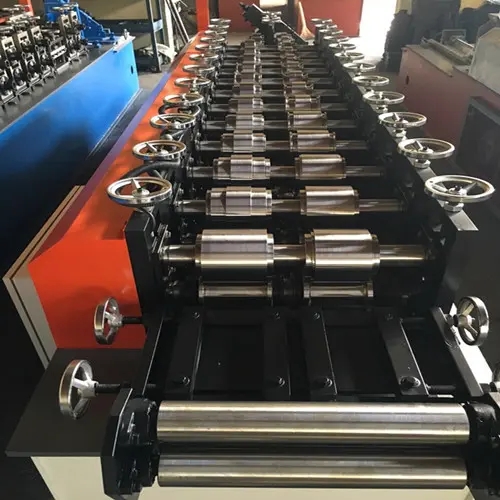
Metal Roofing Sheet Forming Machines An Overview
In recent years, the construction industry has witnessed a significant shift toward the use of metal roofing. Metal roofing offers durability, longevity, and an aesthetic appeal that is hard to match. The increasing demand for metal roofs has led to the development of advanced machinery designed specifically for the efficient production of metal roofing sheets. Among these innovations is the metal roofing sheet forming machine, a pivotal tool that enables manufacturers to produce high-quality roofing materials with precision and speed.
A metal roofing sheet forming machine is a specialized piece of equipment that transforms flat metal coils into finished roofing sheets through a continuous process. Typically, these machines are designed for different profiles, including standing seam, corrugated, and tile-imitating sheets. The versatility of these machines allows manufacturers to cater to various architectural styles and customer preferences.
Components and Operation
The operation of a metal roofing sheet forming machine involves several key components that work in harmony. These include the unwinder, leveler, feeding system, roll forming station, and cutting mechanism.
1. Unwinder The journey begins with the unwinding of metal coils, often made of galvanized steel, aluminum, or other materials. The unwinder ensures a steady supply of raw material to the forming machine.
3. Feeding System Once the metal is leveled, it is fed into the forming machine. The feeding mechanism ensures that the material moves at a consistent speed, crucial for maintaining the precision of the final profiles.

4. Roll Forming Station Here lies the heart of the forming machine. The metal sheet passes through a series of rollers, each carefully designed to shape the material progressively. As the sheet moves through the rollers, it undergoes bending and shaping until it reaches the desired profile.
5. Cutting Mechanism After the metal sheet is adequately formed, it is cut to the specified lengths. Some machines come equipped with automatic cutting features that enhance efficiency and reduce labor costs.
Advantages of Using Metal Roofing Sheet Forming Machines
The adoption of metal roofing sheet forming machines comes with a multitude of advantages. First and foremost is the speed and efficiency of production. These machines allow manufacturers to produce large volumes of roofing sheets in a short time frame, meeting the growing demand in the construction sector.
Another significant advantage is the consistency and quality of the output. With computer-controlled systems, manufacturers can achieve high precision in the dimensions and profiles of the metal sheets. This reduces waste and ensures that all products meet strict industry standards.
Furthermore, investing in a metal roofing sheet forming machine can lead to substantial cost savings over time. While the initial investment may seem substantial, the durability and low maintenance requirements of metal roofing translate to lower long-term costs for building owners.
Conclusion
As the construction industry continues to evolve, the role of technology in enhancing production efficiency cannot be overstated. Metal roofing sheet forming machines represent a critical advancement that meets the demands of modern architecture. With their ability to produce high-quality roofing materials quickly and economically, these machines are invaluable for manufacturers looking to stay competitive in the ever-growing market for metal roofing solutions. As builders and architects increasingly recognize the benefits of metal roofs, the continued evolution of forming technologies will likely play a pivotal role in the future of construction.